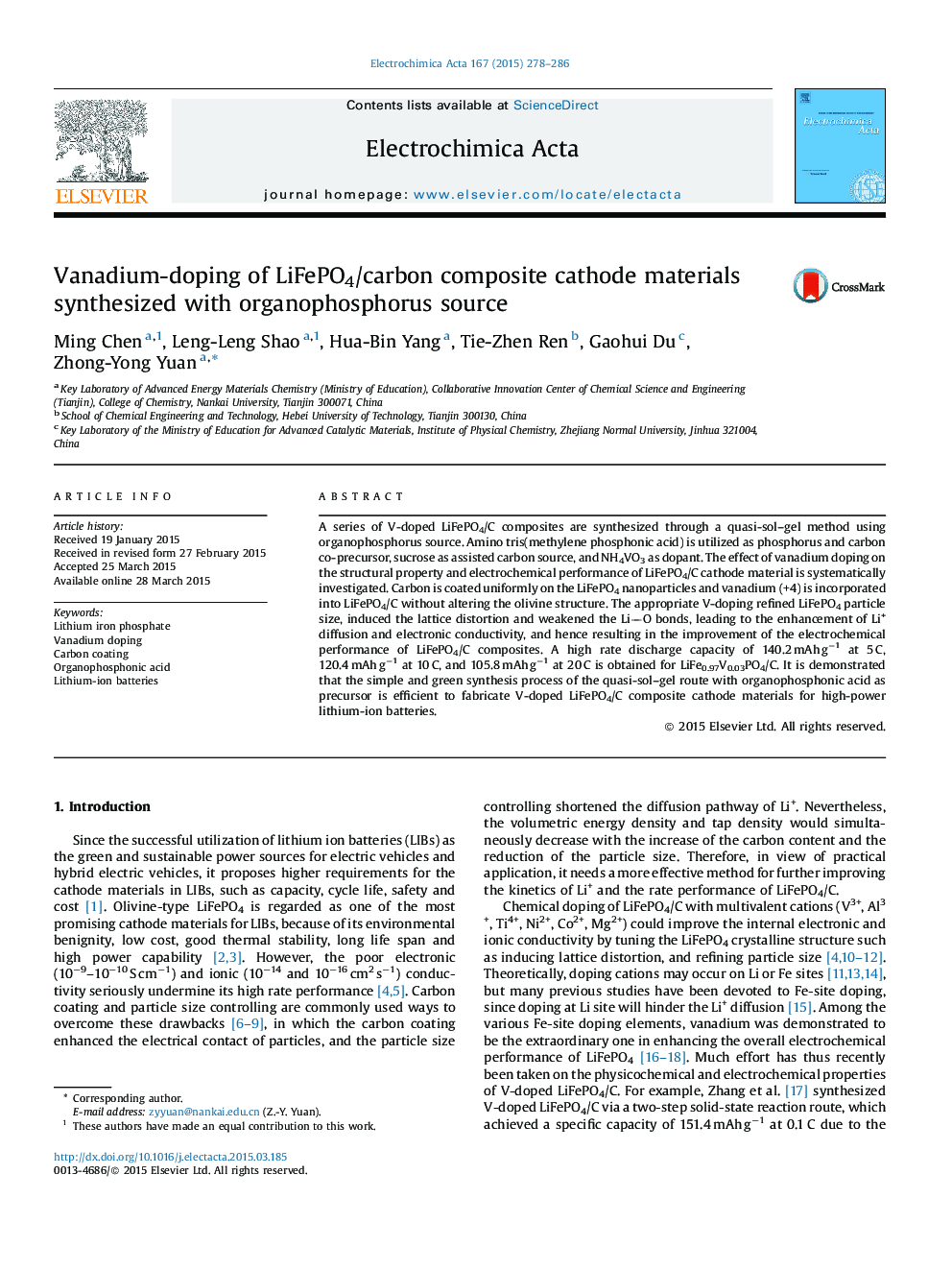| Article ID | Journal | Published Year | Pages | File Type |
|---|---|---|---|---|
| 184353 | Electrochimica Acta | 2015 | 9 Pages |
•V-doped LiFePO4/C composites were prepared by a quasi-so–gel technique using organophosphorus source.•Amino tris(methylene phosphonic acid) was used as phosphorus and carbon co-precursor.•The effect of V doping on the structural and electrochemical properties was evaluated.•The suitable V doping enhanced the Li+ diffusion and electronic conductivity of LiFePO4/C.•The superior high-rate performance was achieved for the LiFe0.97V0.03PO4/C composites.
A series of V-doped LiFePO4/C composites are synthesized through a quasi-sol–gel method using organophosphorus source. Amino tris(methylene phosphonic acid) is utilized as phosphorus and carbon co-precursor, sucrose as assisted carbon source, and NH4VO3 as dopant. The effect of vanadium doping on the structural property and electrochemical performance of LiFePO4/C cathode material is systematically investigated. Carbon is coated uniformly on the LiFePO4 nanoparticles and vanadium (+4) is incorporated into LiFePO4/C without altering the olivine structure. The appropriate V-doping refined LiFePO4 particle size, induced the lattice distortion and weakened the LiO bonds, leading to the enhancement of Li+ diffusion and electronic conductivity, and hence resulting in the improvement of the electrochemical performance of LiFePO4/C composites. A high rate discharge capacity of 140.2 mAh g−1 at 5 C, 120.4 mAh g−1 at 10 C, and 105.8 mAh g−1 at 20 C is obtained for LiFe0.97V0.03PO4/C. It is demonstrated that the simple and green synthesis process of the quasi-sol–gel route with organophosphonic acid as precursor is efficient to fabricate V-doped LiFePO4/C composite cathode materials for high-power lithium-ion batteries.
